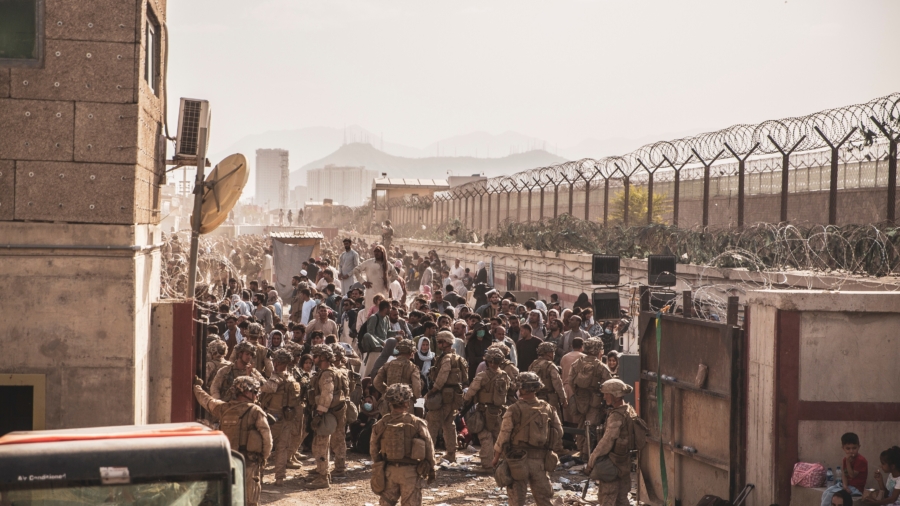The Trump and Biden administrations are to blame for the collapse of Afghanistan’s government due to the U.S. withdrawal from there in 2021, according to a U.S. government watchdog.
This revelation comes as watchdogs from relevant departments testify in front of the House Oversight Committee on April 19: the Department of Defense’s Robert Storch, the State Department’s Diana Shaw, U.S. Agency for International Development’s Nicole L. Angarella, and the Special Inspector General for Afghanistan Reconstruction’s John Sopko.
In written testimony (pdf) before the committee, Sopko wrote there were five factors behind the collapse.
One of them was that the Afghan government believed the United States would stay.
“Despite many official pronouncements throughout the Bush, Obama, and Trump administrations about the U.S. desire to exit Afghanistan, contradictory messaging by U.S. officials failed to convey the seriousness of U.S. intentions,” he wrote.
“Inconsistent U.S. policy statements amplified the confusion,” added Sopko, who cited the Trump administration’s 2020 deal with the Taliban that had a conditions-based agreement to withdraw U.S. forces from Afghanistan and a joint U.S.-Afghan government declaration reaffirming their commitment to militarily combat terrorism.
“Both the language of the U.S.-Taliban agreement and statements by senior U.S. officials left open the possibility that the United States would not leave Afghanistan until all the agreement’s conditions were met,” wrote Sopko, who went on to say that Biden’s April 14, 2021, withdrawal announcement should have put an end to that speculation.
However, said Sopko, “it is unclear whether the Afghan government, and particularly President [Ashraf] Ghani, fully grasped its meaning.”
Sopko noted that Afghan’s security forces were ill-prepared to fight the Taliban.
A second factor, according to Sopko, was the United States leaving out the Afghan government and instead just negotiating with the Taliban.
“The agreement likely led Taliban leaders to seek a resolution with the Afghan government on the battlefield rather than through peace talks,” he wrote.
A third factor, wrote Sopko, was the Afghan government wanting the Taliban “to be integrated under the umbrella of the Republic.”
Moreover, he wrote, “a senior member of the Afghan negotiating team, Fatima Gailani, told SIGAR that President Ghani was convinced that President [Joe] Biden would win the 2020 election, and would start negotiations over again from scratch. Accordingly, he refused to relinquish power until the last possible moment.” Ghani fled Afghanistan on Aug. 15, 2021.
A fourth factor, noted Sopko, was the Taliban was unwilling to budge.
“The U.S. promise to withdraw its military forces and the Taliban’s subsequent successes on the battlefield made the Taliban unwilling to negotiate or compromise,” he wrote. “Moreover, the U.S.-Taliban agreement and the subsequent April withdrawal announcement gave the Taliban its core demand: the complete withdrawal of U.S. and coalition troops, as well as contractors. From that point onward, the insurgency increasingly focused on defeating the Afghan government on the battlefield.
“By April 2021, a U.S. intelligence community assessment concluded that “the Taliban is confident it can achieve military victory.” Over the next 2 months, the Taliban’s offensive accelerated as the insurgency rapidly gained control of half of Afghanistan’s 419 districts. On August 15, 2021, Kabul fell.”
Finally, said Sopko, Ghani relied only on a handful of advisors as opposed to working with the entire Afghan government.
From The Epoch Times

